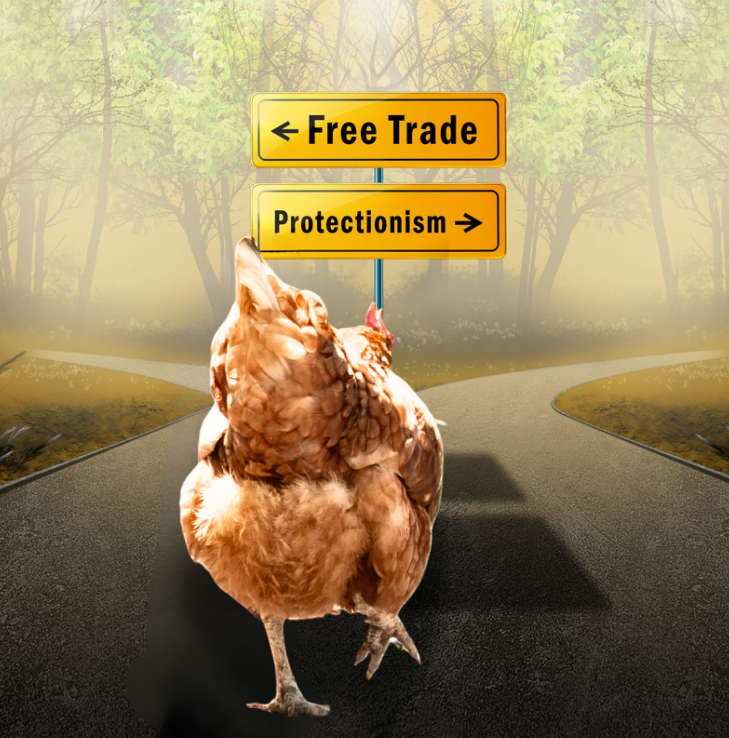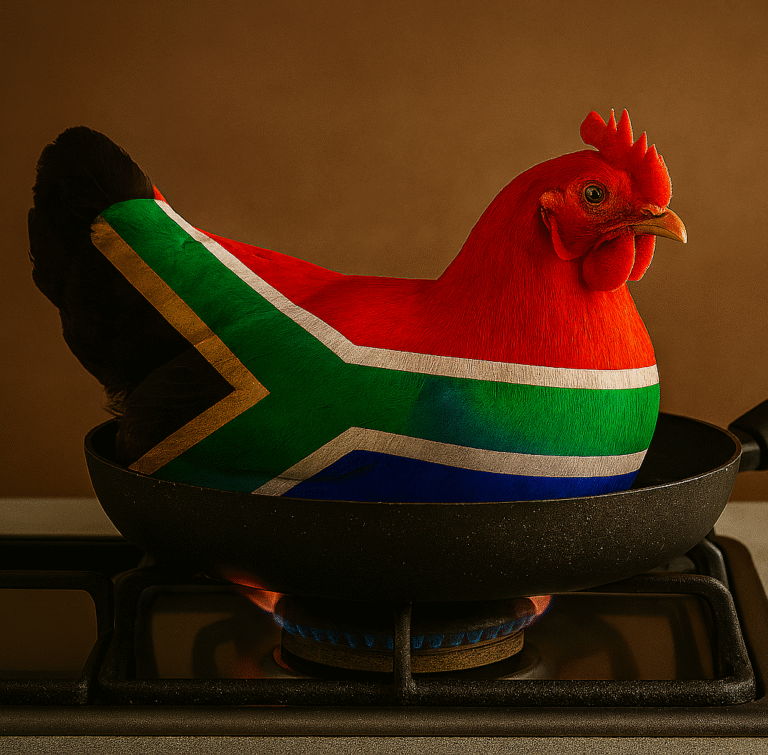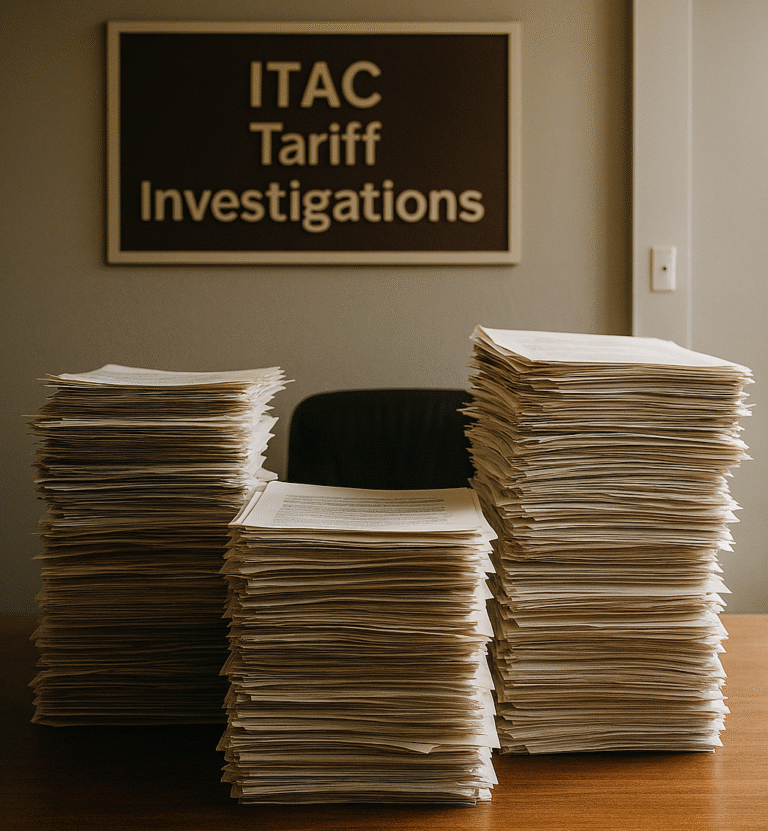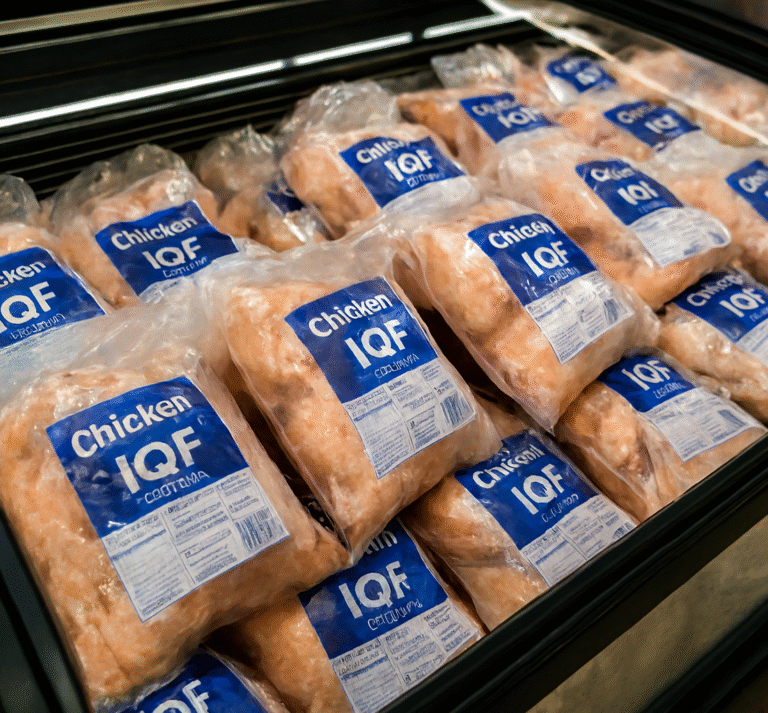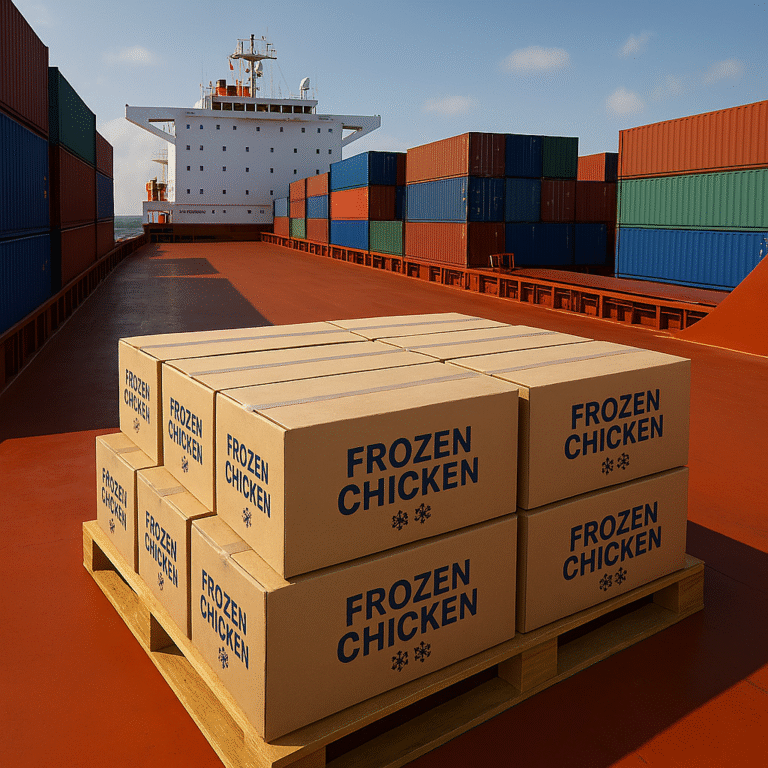South Africa’s poultry industry has staged a remarkable recovery since the devastating bird flu outbreaks of 2023, which saw over 9.5 million birds culled and billions of rand in losses.
By mid-2025, production levels have not only stabilised but surged, with major players like Astral Foods and Rainbow Chicken reporting improved profitability and restored breeder stocks.
Yet, as the sector regains its footing, a renewed wave of protectionist lobbying has emerged, targeting poultry imports with increasing intensity.
A Sector Reborn — and Reasserting Influence
The South African Poultry Association (SAPA) has long advocated for shielding local producers from what it terms “unfair competition” through imported poultry, particularly from Brazil, the United States and the European Union.
Following a South Africa-bound consignment of bone-in chicken from the USA under the Tariff Rate Quota (TRQ) agreement, lobbying for increased local industry protection has intensified, including Rainbow Chicken’s recent call for the scrapping of the quota agreement entirely.
SAPA has also criticised South Africa’s trial agreement with the US to self-impose and lift poultry trade restrictions relating to bird flu.
Historic and current lobby efforts point to the sector’s ability to rapidly mobilise policy responses.
The South Africa Poultry Association (SAPA), in consultation with ITAC (International Trade Administration Commission of South Africa), prepared the existing tariff structure implemented to protect local producers:
| Category | MFN Duty Implemented 2013 | MFN Duty Increase Implemented 2020 |
| Whole frozen chicken | 82% | |
| Frozen carcasses | 31% | |
| Frozen offal (heads, livers, feet) | 30% | |
| Frozen bone-in portions | 37% | 62% |
| Frozen boneless portions | 12% | 42% |
While implementing safeguards against chicken dumping in South Africa is warranted, local producers have successfully advocated for excessive anti-dumping duties, resulting in substantially reduced imports of competitive bone-in chicken since 2020.
While local producers have enjoyed the majority of bone-in chicken market share, it has removed consumer choice and afforded producers’ control over bone-in chicken pricing. Ultimately, consumers are paying for the demise of bone-in chicken imports.
However, significant factors beyond poultry imports influence the current market dynamics, and one of them is the inhospitable environment in which South African businesses operate. These include failing infrastructure, electricity supply, water access, and balanced trade.
Infrastructure Failures Driving Protectionist Sentiment
While trade protectionism is often framed as a response to unfair international competition, a more systemic threat to competitiveness lies closer to home.
Chronic infrastructure failures have become major cost drivers, eroding margins and disincentivising costly industry growth ambitions.
Speaking to ChickenFacts on the topic, Donald MacKay at XA Global Trade Advisors, calls into question the connection often drawn between poultry imports and the systemic issues facing South Africa’s poultry sector:
Electricity Supply: Cost Burden & Infrastructure Gaps
South Africa’s poultry sector remains heavily exposed to Eskom’s historic instability and unreliable municipal infrastructure.
Producers have been forced to invest in diesel generators, solar installations and thermal insulation, all of which inflate production costs.
Last year, International trade law and dumping expert, Dr. Gustav Brink, told BusinessTech that internal issues and government failures have had a much bigger impact on the industry.
Brink stated that, despite claims by the South African Poultry Association, local producers cannot meet chicken demand. The main imported product is mechanically deboned meat (MDM), which South Africa does not produce.
“Industry argues that a set number of jobs are lost for every 1,000 tonnes of imports. However, you cannot lose jobs if you never had the capacity to produce in the first place.”
Brink added that apart from issues with how the industry is run, problems at the government level have also contributed to poultry producers’ struggles. “One must also not underestimate the massive impact government failure, especially at Eskom, has had on the industry.”
He noted that the industry combined has spent an additional few billion in electricity and water access over the past few years. However, Brink emphasised that it cannot be blamed on dumping, and duties cannot be imposed to cover up these government inefficiencies, thus further penalising consumers.
Water Access: Hidden Costs & Resilience Measures
Water supply challenges mirror those of electricity. Producers are increasingly investing in alternative systems including boreholes, filtration units and on-site storage to maintain hygiene standards and ensure operational continuity.
Government support for these investments remains minimal, placing the associated costs squarely on producers. This aligns with broader critiques of local governance failures, such as those raised by MacKay and Dr. Brink, who have highlighted the disconnect between national policy ambitions and municipal delivery realities.
Without meaningful infrastructure reform and targeted support, South Africa’s poultry sector risks becoming increasingly inward-looking because it lacks the foundational conditions to compete globally.
Balanced Trade: Industry Cannot Export Without Imports
Despite significant infrastructure and bird flu challenges, SAPA has indicated that the poultry industry remains resilient and well-poised for growth.
The sector demonstrated a remarkable recovery from the 2023 bird flu disaster, having increased slaughter numbers to 22.3 million birds per week by mid-2024.
SAPA acknowledged challenges including interruptions in electricity supply, water scarcity and poor water quality, as well as inefficiencies within the rail and port networks disrupting supply chains.
“Despite these challenges, 2024 saw significant achievements for the industry.
Production volumes reached record-breaking levels. Imports were reduced to just 13% of their 2018 levels, demonstrating strong domestic growth.
The industry also benefited from a stronger profile in the media, which helped improve visibility and credibility.
Furthermore, there was notable progress in the development of Masterplan Phase 2, focusing on long-term industry growth. Export potential increased, particularly to the UK, and overall, the industry is now in a stronger position than it was 5 or even 10 years ago, although the ongoing threat of HPAI remains a significant concern.” SAPA’s Izaak Breitenbach concluded.
The UK exports potential mentioned by SAPA, however, refers to cooked poultry products. South Africa lacks the veterinary infrastructure and residue monitoring systems required for fresh poultry exports to high-value markets like the EU and UK. This is likely why local producers pivoted to cooked exports, which bypass many of these hurdles.
Speaking to ChickenFacts, Donald MacKay further elaborated on the export ambitions under the Poultry Mater Plan (PMP), unconvinced that there is any real intention to export raw product to these markets:
South Africa’s poultry sector stands at a critical juncture, where ambitions for export-led growth are undermined by protectionist resistance to competitive imports.
This contradiction, particularly in light of rising profits and a broadly optimistic industry outlook, reveals a deeper structural imbalance that cannot be resolved through trade policy alone.
The current model is no longer fit for purpose and demands a comprehensive overhaul. Government must prioritise investment in critical infrastructure, including stable electricity, reliable water supply, and improved ports and railways.
It must also expand access to skilled veterinary services to meet global biosecurity standards, which would reduce export risks for local producers.
In addition, the legacy practice of brining chicken, while entrenched domestically, is not recognised by international markets and must be addressed if South Africa is to compete globally.
A fair and reciprocal trade environment would unlock significant benefits for the sector, but only if government creates a more enabling business climate. Whether this will happen remains uncertain, as historic performance offers little reassurance.
Perhaps it is through joint industry and government collaboration, that real change can emerge, change that benefits bilateral trade, local industry, consumers, and the broader economy.
The existing chasm within the poultry sector and government does little to progressively impact both the sector and the broader economy.
Effective industry transformation is likely to emerge only from transparent and unified collaboration between industry and government.
